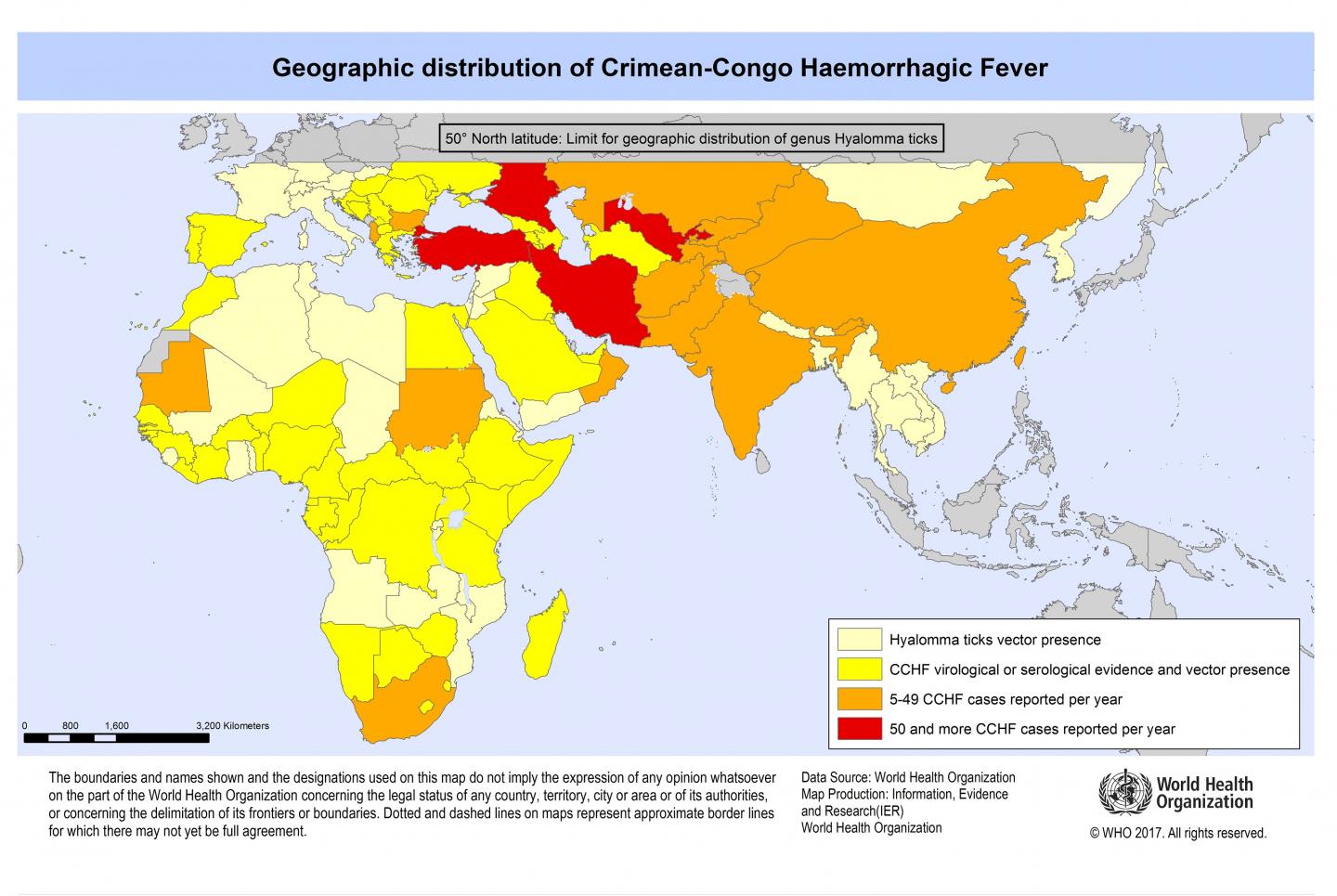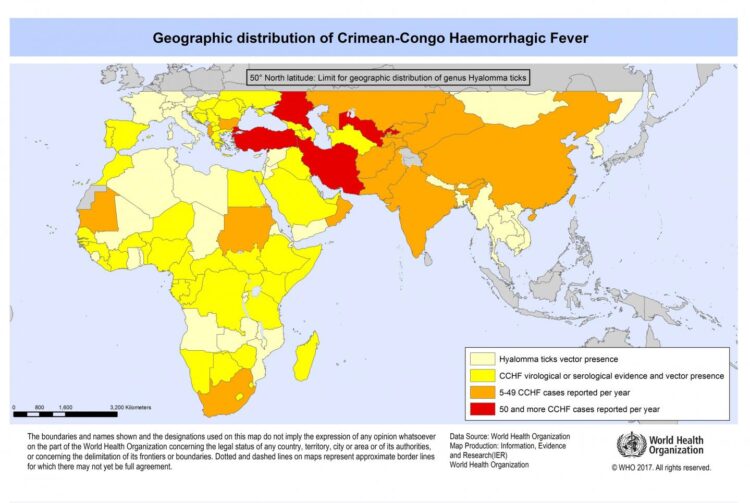Monkeys protected against CCHFV, which infects thousands of people annually

Credit: WHO
WHAT:
An experimental vaccine developed in Europe to prevent infection by Crimean-Congo hemorrhagic fever virus (CCHFV) has protected cynomolgus macaques in a new collaborative study from National Institutes of Health scientists. The animals received the DNA-based candidate vaccine through intramuscular injection immediately followed by electroporation–a process in development for human vaccines that helps cells absorb DNA. The study, published in Nature Microbiology, comes about three years after the same research group developed the macaque model for CCHFV. No specific treatments or vaccines for CCHFV exist.
Crimean-Congo hemorrhagic fever, first described in 1944, is spread primarily by the bite of Hyalomma ticks found in the Middle East, Asia, Africa and parts of Europe. The virus also can be transmitted to people by direct contact with infected fluids or tissue from people or certain livestock species. CCHFV infects up to 15,000 people annually, according to the World Health Organization. About 1 in 8 of those who are infected develop severe disease, which leads to about 500 deaths each year. CCHFV also is considered a possible agent of bioterrorism.
Scientists from NIH’s National Institute of Allergy and Infectious Diseases (NIAID) in Hamilton, Montana, tested the candidate vaccine on six cynomolgus macaques, each of which received three inoculations, followed by electroporation, at three-week intervals. No animals experienced significant adverse reactions upon vaccination. Through regular blood tests, the researchers confirmed that the candidate vaccine generated protective antibodies against the virus. They then infected the vaccinated animals with CCHFV and monitored them for clinical signs for six days, after which they looked for virus in their organs. Six control animals infected with CCHFV but not given the experimental vaccine showed signs of disease throughout the study. The vaccinated animals did not. Their blood tests remained largely unchanged with no indication of progressive virus infection and no virus shedding. Virus was nearly undetectable in their liver, kidneys, lungs and adrenal glands, all targets of CCHFV.
Collaborators at the Karolinska Institute in Sweden developed the candidate vaccine with colleagues from the Public Health Agency of Sweden, the National Veterinary Institute of Sweden, the Justus Liebig University in Germany and NIAID’s Rocky Mountain Laboratories in Montana. The candidate vaccine uses two proteins from CCHFV to generate protection.
The researchers next plan to study if the vaccine candidate is effective with fewer than three doses and whether it offers long-term protection. They also plan to continue evaluating the use of electroporation to make vaccination more effective.
###
ARTICLES:
D Hawman et al. A DNA-based vaccine confers significant protection from CCHFV infection in Cynomolgus macaques. Nature Microbiology DOI: 10.1038/s41564-020-00815-6 (2020).
E Haddock et al. A cynomolgus macaque model for Crimean-Congo haemorrhagic fever. Nature Microbiology DOI: 10.1038/s41564-018-0141-7 (2018).
WHO:
Heinz Feldmann, M.D., Ph.D., chief of NIAID’s Laboratory of Virology, and David Hawman, Ph.D., Laboratory of Virology, are available to comment on these studies.
CONTACT:
To schedule interviews, please contact Ken Pekoc, (301) 402-1663, [email protected].
NIAID conducts and supports research–at NIH, throughout the United States, and worldwide–to study the causes of infectious and immune-mediated diseases, and to develop better means of preventing, diagnosing and treating these illnesses. News releases, fact sheets and other NIAID-related materials are available on the NIAID website.
About the National Institutes of Health (NIH): NIH, the nation’s medical research agency, includes 27 Institutes and Centers and is a component of the U.S. Department of Health and Human Services. NIH is the primary federal agency conducting and supporting basic, clinical, and translational medical research, and is investigating the causes, treatments, and cures for both common and rare diseases. For more information about NIH and its programs, visit http://www.
NIH…Turning Discovery Into Health®
Media Contact
Ken Pekoc
[email protected]
Related Journal Article
http://dx.





